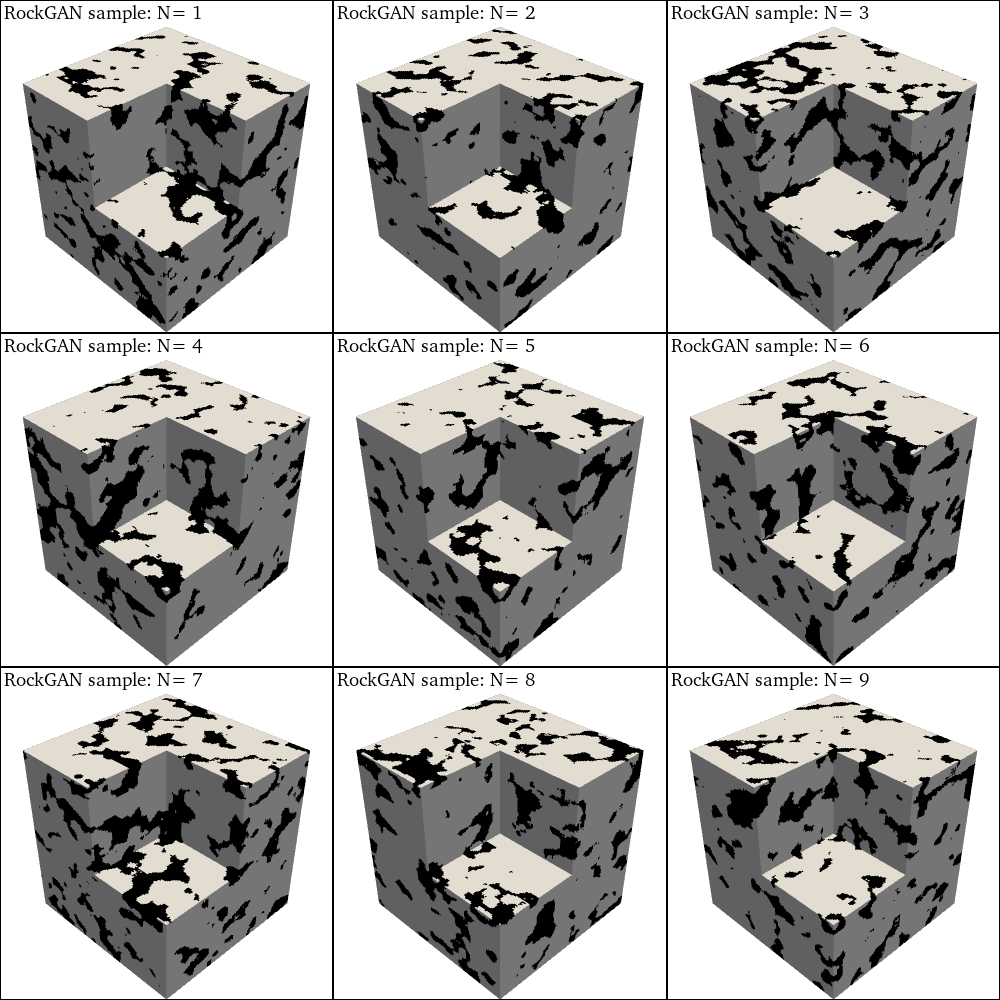RockGAN
3D Porous media generation using WGAN-GP.
Welcome to the RockGAN project ![]()
![]()
![]()
The 3D porous media generation using a Wasserstein GAN with gradient penalty (here named as RockGAN) was born as part of a course project at KAUST. The main inspiration comes from the novel ideal of Lukas Mosser
What will you find here?
The reader will find a short description of the project delivered in a friendly way and a nutshell. For more technical details, we suggest reading the conference paper submitted
- How should we create our dataset?
- What kind of architecture should we implement?
- What loss function is more suitable?
- Should we use normalization in both networks and which kind of it?
- Is it possible to add physical constraints in the loss to make more representative samples?
Just remember that GANs are quite of trial and error :D. I hope you enjoy it!
Workflow
Here, we take a similar but different approach. Our work is based on some key points from the paper from Tego Karras at NVIDIA
- Growing progressively from low to high dimension (Critic in the opposite way).
- Use normalization just in one of the layers.
- We tested different activation functions, at the end, better results were achieve using GELU.
- We used the Wasserstein formulation with gradient penalty.
The main workflow idea is expressed in the following figure:

Results
Let us compare the results obtained with RockGAN and the training data of the Berea dataset.
Real samples

Generated samples

Publication
More details about the project could be found on the following publication: RockGAN.